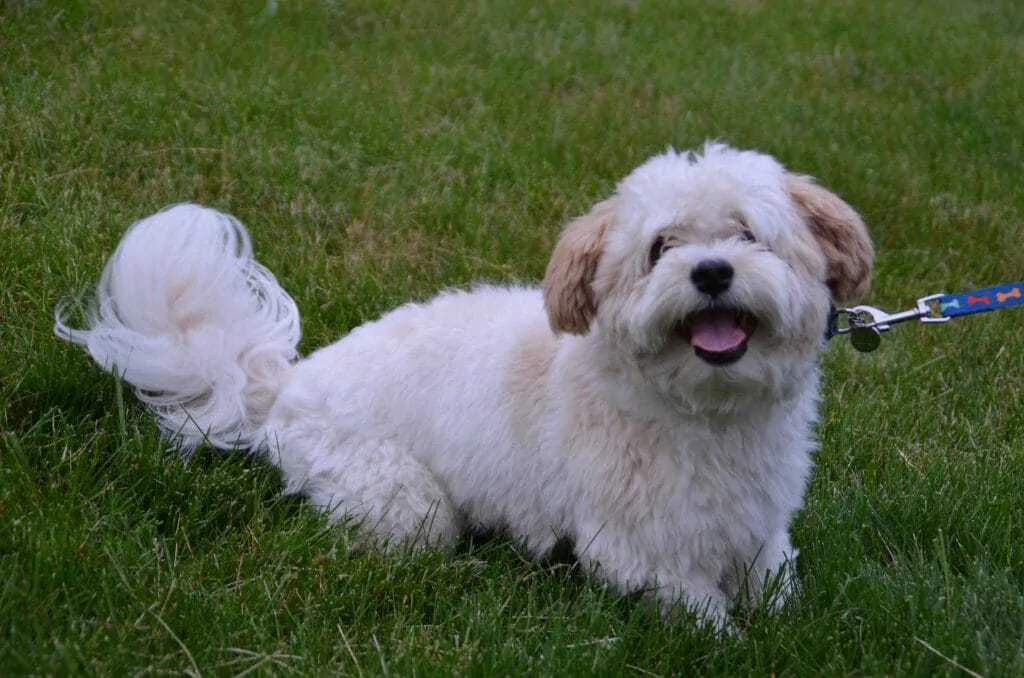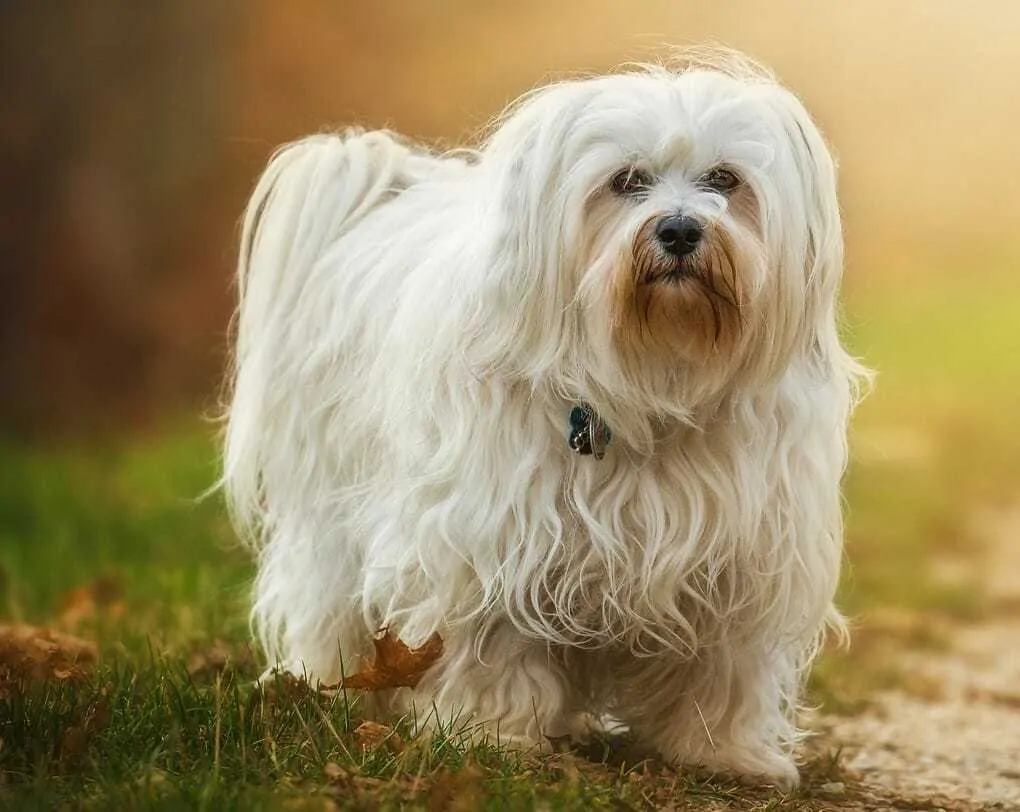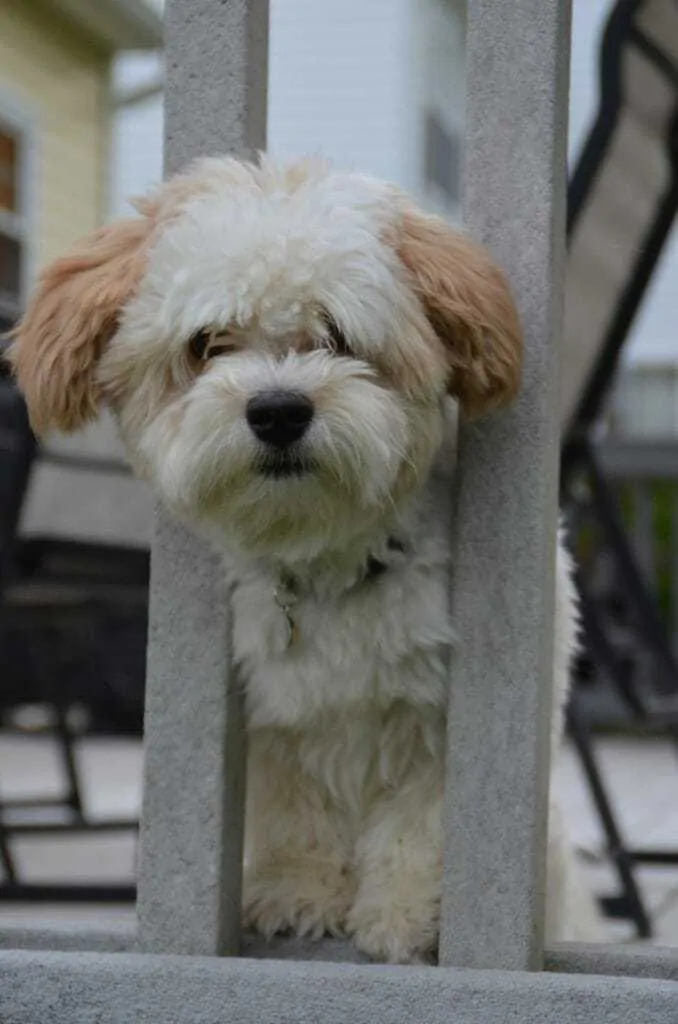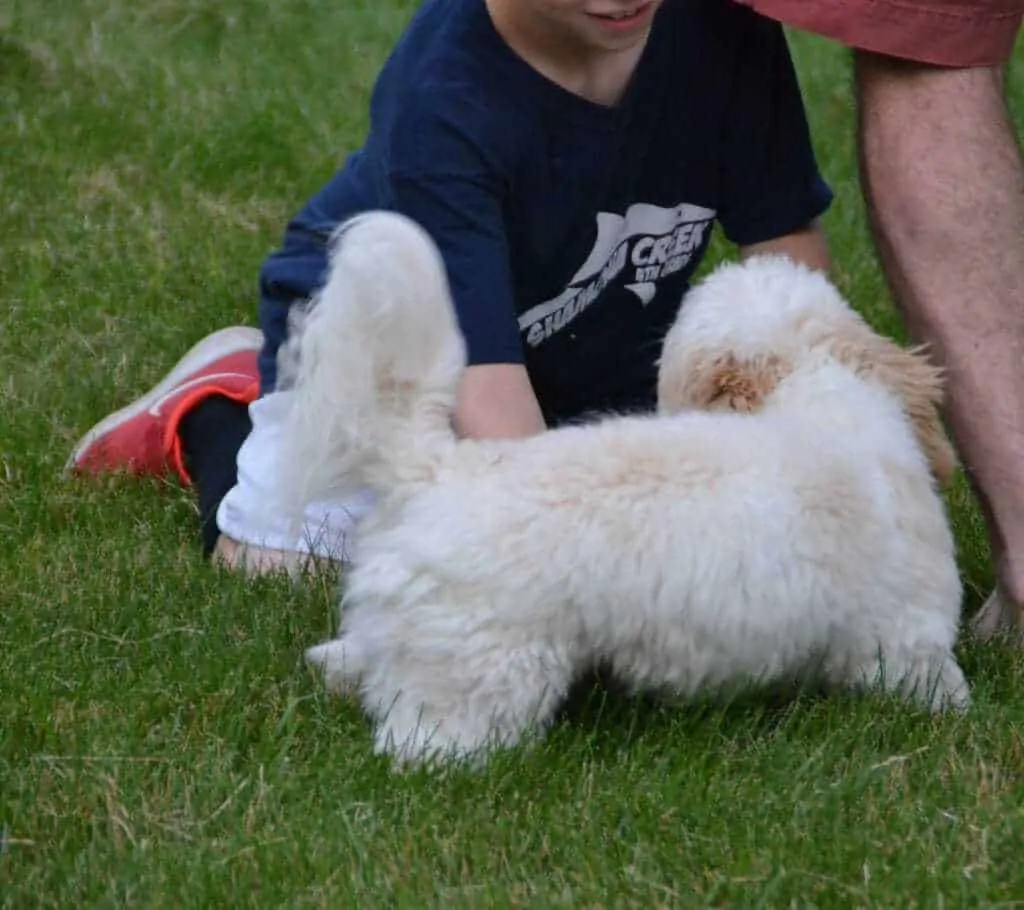There are myths that exist about small dogs, and the Havanese are here to debunk just about all of them.
The myths are that they’re skittish, wary of too many people being around, and that they’re not too fond of strangers. The Havanese is the opposite of each of those traits.
This is a breed that loves to be in the thick of the action, that can’t get enough of people, and that loves to play with anyone who wants to play with him. He is a snuggly lapdog that also has the disposition and nature to be the life of the party.
Here are eleven things you should know about this beautiful little dog.
Contents
We can’t say it enough: This breed is full of personality.
Every breed has its quirks, but the one that the Havanese is most known for is its amazing personality. Its springy walk is a characteristic of the breed. Although that gait is due to having shorter front legs and powerful back legs driving them along, it’s also a visual of its fun and playful personality. This breed is the life of the party. It loves to be with its people and it loves to be the center of attention. As long as the family is all together, the Havanese is happy.
Bailey is just under a year old. He is playful and has yet to meet a stranger in the months that he has been with his family. He has the trademark fluffy puppy fur that is a hallmark of the breed, and you can tell by his fun expression how much he loves playing in his yard.
It’s got an impressively long life.
While it’s true that little dogs tend to have a longer life span than larger dogs do, the Havanese has a long life even for little dogs. Their life expectancy is 14-16 years. They have a maximum height of 11.5 inches and a maximum weight of 13 pounds. They are a pretty popular breed, coming in at number 24 out of 193 breeds in the AKC. The price of a Havanese puppy reflects this popularity. They average between $1,800-$2,500 per puppy on the AKC’s puppyfinder site.
They are the only dog breed native to Cuba.
Havanese count the Bichon Frise and the Maltese as ancestors in their lineage. The breed was said to be brought to Cuba by Spaniards, and Cubans spent years molding the breed, mixing it with poodles to create the dog that we know today, thus making it the only breed that is native to Cuba. Havanese were called the “Havana Silk Dogs” and became the lapdogs of the wealthier people in that country.
This is a long-haired Havanese. The breed looked like this when they were the pets of wealthy Cuban citizens, and they still look like this today. You may also find Havanese that have their hair in long cords. The coat actually insulates the dog from the sun and prevents overheating.
They came to America with their Cuban owners who were fleeing Castro and the communist regime.
When Castro came to power in 1959, Cubans started leaving the country and came to America – and they brought their dogs with them. Americans fell in love with “Havana Silk Dogs,” and in 1979 the Havanese Club of America was formed. The American Kennel Club formally recognized the breed in 1999, making it the 142nd breed registered with them.
They require regular grooming.
The coat on an adult Havanese can be either long and silky, or it can be kept short. If it’s long, it needs to be brushed out consistently to prevent it from matting or knotting. A puppy’s coat will be very fluffy before it grows – if an owner decides to let it grow. No matter what style an owner chooses for his dog, regular grooming and trimming will be required. The breed doesn’t shed much, which makes combing and grooming even more important.
Unlike other breeds that have very specific color or marking requirements in order to be considered for a show dog, this breed’s coat can be any color, and it can have any type of marking on it. The coat can also be corded, but the whole body should be covered with cords if that’s how you want the dog’s coat to look.
This Havanese has long, dark brown hair. Contrary to what you might think when looking at the dog, the long hair doesn’t shed very much at all. That should not be confused with being hypoallergenic, but rather help to emphasize the importance of daily grooming.
They are generally very healthy dogs with few genetic issues.
The Orthopedic Foundation for Animals (OFA) collects health information from all registered breeders and publishes it for anyone interested in knowing both the history of the breeder and the history of the puppy that they’re adopting. The Havanese Club of America (HCA) recommends that all breeders be registered with the OFA and that any potential puppy purchasers check out that database before buying a dog.
The HCA recommends four different tests for breeders to put their puppies through: eye exam, hearing test, hip x-rays, and kneecap tests. Completing these tests gets a CHIC (Canine Health Information Center) number for the dog. The HCA is so committed to promoting health in the breed that they won’t list breeders on their website unless the dogs being bred have CHIC numbers.
Havanese have a prize-winning temperament.
This is a breed that is outgoing and eager to please. They’re fun and spunky dogs. They are so social, in fact, that any shyness demonstrated while they’re being shown and judged at a dog show is considered a fault. They want to know everything that’s going on around them, and their environment matters less than the people in the home. In other words, they do just as well in apartments as they do in large houses as long as they have their people nearby – and maybe a window that they can see out of to check out the neighbors!
Bailey often sticks his head out of the slats on his porch so that he can check out the neighbors and any wildlife that happen to stray onto his property. He doesn’t bark unless he sees people or animals scurrying around, which he interprets as being left out of playtime.
They are a tough member of the Toy Group.
The Toy Group of dogs (as designated by the AKC) is comprised of animals that are much smaller in size. They’re usually considered to be a little bit more delicate than larger breeds, and extra care should be taken when playing with them. That’s not the case with the Havanese. They are more rough-and-tumble by nature and love playing hard with their humans. Their temperament makes them want to join in the fun no matter what’s going on. They’re even good swimmers if they’ve been raised around water!
This easygoing breed is great with kids and other pets.
One of the key characteristics of the Havanese that we’ve already highlighted is their loyalty. They love nothing more than hanging out with their people, and that includes children. They welcome attention from kids, unlike other smaller-breed dogs, and typically get along very well with other animals in the home. Early socialization is critical, as it is with most breeds, but the Havanese generally get along well with people and pets.
In this picture, Bailey is playing with a child who lives next door to him and who he only met once before. They became fast friends and even chased a ball around the backyard together for a while.
This breed does not need a lot of exercise, making it an excellent dog for older owners.
The Havanese is quite content with a short daily walk and a few other outings throughout the day to relieve himself outside. However, one of the breed’s favorite things to do is play with their owners, and it loves a good romp around the backyard. While you have to be careful not to let them over-exercise, letting them have a good romp in the backyard will release a lot of energy that might otherwise get misdirected into naughty misdeeds in the house.
Bailey loves to run around his yard, and his favorite toy is larger than him. He much prefers playing his own version of soccer with a large pink plastic ball than he does playing fetch with a tennis or rubber ball. And he’s really fast too!
Was the beloved character “Tiny Tim” named after Charles Dickens’ Havanese?
Charles Dickens is just one of several famous people who have loved and owned this breed. Dickens had a Havanese named Tim. Considering the smaller stature of the dog, we can’t help but wonder if the iconic character of Tiny Tim from Dickens’ classic “A Christmas Carol” was named after the author’s dog? Or maybe the dog was named after the character? No matter which came first, it’s fun to think that a famous author like Dickens loved his dog as much of the rest of us love ours.

Jen Jones is a professional dog trainer and behavior specialist with more than 25 years of experience. As the founder of ‘Your Dog Advisor’ and the ‘Canine Connection’ rehabilitation center, she applies a holistic, empathetic approach, aiming to address root causes rather than merely treating symptoms.
Well known for her intuitive and compassionate approach, Jen adopts scientifically-proven, reward-based methods, encouraging positive reinforcement over punishment. Jen specializes in obedience training, behavior modification, and puppy socialization. Her innovative methods, particularly in addressing anxiety and aggression issues, have been widely recognized. Jen has worked with many of the world’s leading dog behaviorists and in her free time volunteers with local animal shelters and rescue groups.





